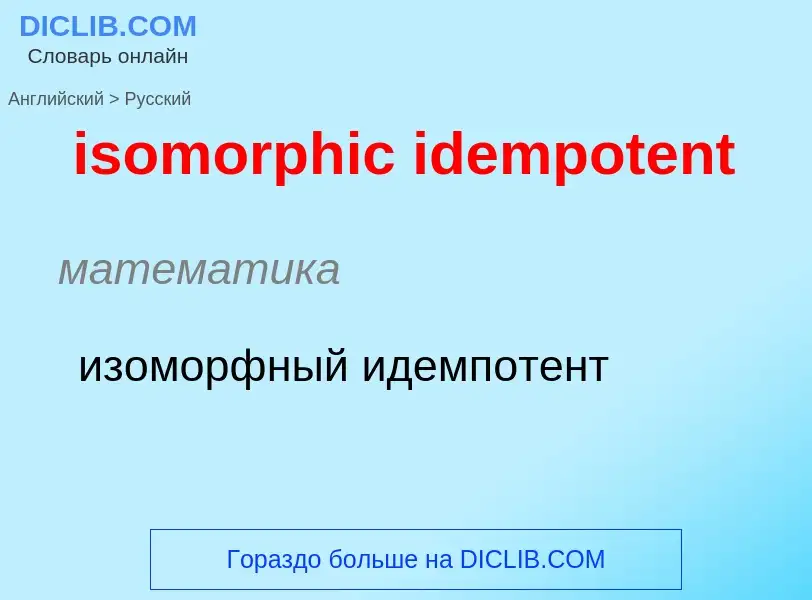Translation and analysis of words by ChatGPT artificial intelligence
On this page you can get a detailed analysis of a word or phrase, produced by the best artificial intelligence technology to date:
- how the word is used
- frequency of use
- it is used more often in oral or written speech
- word translation options
- usage examples (several phrases with translation)
- etymology
isomorphic idempotent - translation to russian
математика
изоморфный идемпотент
математика
идемпотентный эндоморфизм
математика
центральный идемпотент
Definition
Wikipedia
In mathematics the Karoubi envelope (or Cauchy completion or idempotent completion) of a category C is a classification of the idempotents of C, by means of an auxiliary category. Taking the Karoubi envelope of a preadditive category gives a pseudo-abelian category, hence the construction is sometimes called the pseudo-abelian completion. It is named for the French mathematician Max Karoubi.
Given a category C, an idempotent of C is an endomorphism
with
- .
An idempotent e: A → A is said to split if there is an object B and morphisms f: A → B, g : B → A such that e = g f and 1B = f g.
The Karoubi envelope of C, sometimes written Split(C), is the category whose objects are pairs of the form (A, e) where A is an object of C and is an idempotent of C, and whose morphisms are the triples
where is a morphism of C satisfying (or equivalently ).
Composition in Split(C) is as in C, but the identity morphism on in Split(C) is , rather than the identity on .
The category C embeds fully and faithfully in Split(C). In Split(C) every idempotent splits, and Split(C) is the universal category with this property. The Karoubi envelope of a category C can therefore be considered as the "completion" of C which splits idempotents.
The Karoubi envelope of a category C can equivalently be defined as the full subcategory of (the presheaves over C) of retracts of representable functors. The category of presheaves on C is equivalent to the category of presheaves on Split(C).

